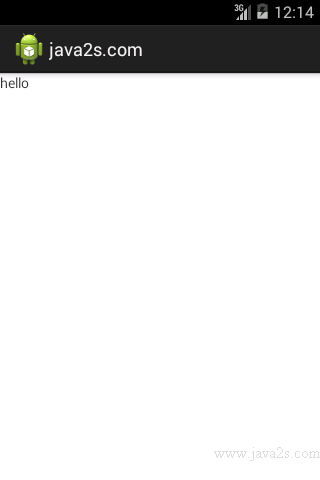Android Tutorial - Android Activity
An activity displays the user interface of your application, which may contain widgets such as buttons, labels, textboxes, and so on.
Typically, you define your UI using an XML file,
for example the main.xml file located in
the res/layout folder of your project.
<?xml version="1.0" encoding="utf-8"?> <LinearLayout xmlns:android="http://schemas.android.com/apk/res/android" android:layout_width="fill_parent" android:layout_height="fill_parent" android:orientation="vertical" > <TextView android:layout_width="fill_parent" android:layout_height="wrap_content" android:text="hello" /> </LinearLayout>
During runtime, you load the XML UI in the onCreate()
method handler in your Activity class,
using the setContentView() method of the Activity class:
@Override public void onCreate(Bundle savedInstanceState) { super.onCreate(savedInstanceState); setContentView(R.layout.main); }
During compilation, each element in the XML file is compiled into its equivalent Android GUI class, with attributes represented by methods.
The Android system then creates the UI of the activity when it is loaded.
The code above generates the following result.
